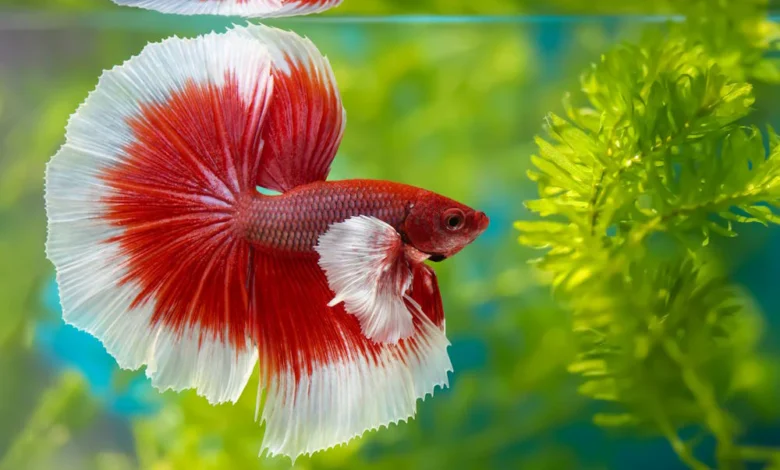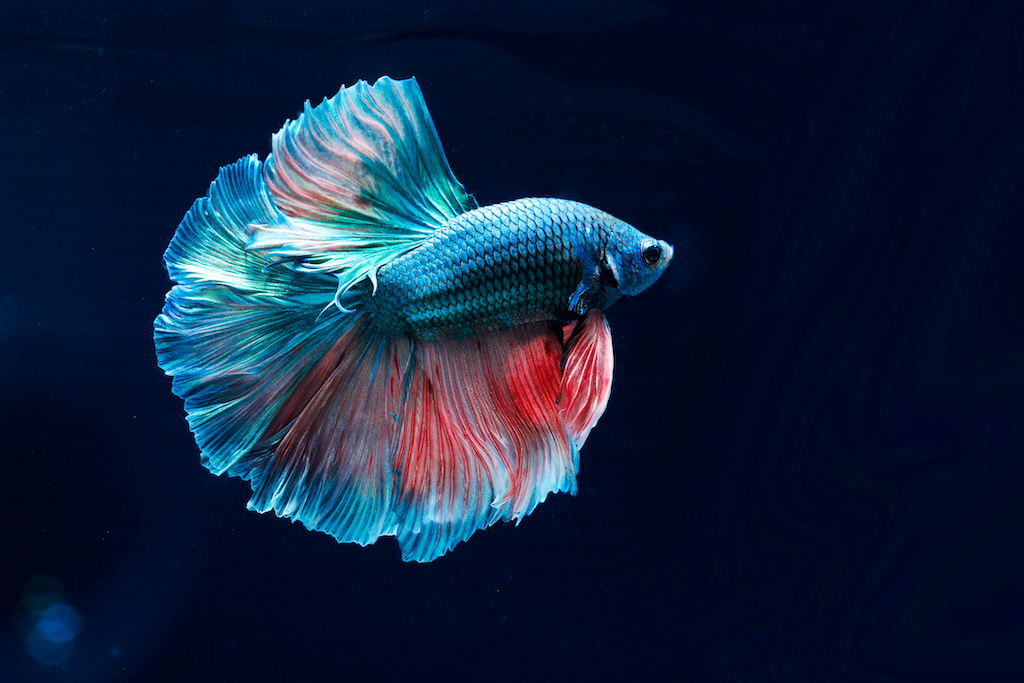Betta Fish: The Colorful Kings of the Aquarium World

When it comes to aquarium fish, few species are as well-known and admired as the betta fish. With their vibrant colors, flowing fins, and confident personalities, bettas have captured the hearts of fish keepers around the world. Also called “Siamese fighting fish,” these little creatures have a history and personality that set them apart from other freshwater fish.
What makes bettas especially fascinating is their ability to thrive in smaller environments compared to many other species. Their unique labyrinth organ allows them to breathe oxygen directly from the surface, meaning they can live in conditions that other fish simply couldn’t handle. While this doesn’t mean they should be kept in tiny cups or bowls forever, it does highlight just how resilient they are.
Beyond their physical characteristics, bettas have become a symbol of beauty and uniqueness in the aquarium hobby. Whether you’re a beginner or an experienced aquarist, chances are you’ve considered keeping one of these little aquatic gems in your collection.
The Origins and History of Betta Fish
Bettas originate from Southeast Asia, particularly Thailand, Cambodia, and Vietnam. In the wild, they’re often found in shallow rice paddies, ponds, and slow-moving streams. Betta Fish Unlike the flashy bettas you see in pet stores, wild bettas tend to be smaller and less colorful, blending more naturally into their surroundings.
The domestication of bettas began hundreds of years ago in Thailand. Locals noticed their territorial and aggressive nature and began selectively breeding them for fighting purposes, much like cockfighting. This earned them the name “Siamese fighting fish.” Over time, their aggressive tendencies were still present, but breeders started focusing more on enhancing their colors and fin structures rather than purely on fighting ability.
Today, bettas are among the most popular aquarium fish worldwide. They’re not just admired for their looks but also their fascinating behavior. Their evolution from humble wild origins to dazzling ornamental fish is a testament to the dedication of breeders and the natural adaptability of the species.
The Stunning Colors and Varieties of Betta Fish

Betta Fish One of the main reasons bettas are so beloved is their breathtaking variety of colors and fin types. From solid reds and blues to intricate patterns like marbling or koi-style coloration, there’s a betta to suit nearly every aesthetic preference.
Different fin types also make them stand out. You’ll find varieties like the veil tail, crown tail, halfmoon, delta tail, and double tail, each offering a unique display. Halfmoons, for instance, have a dramatic 180-degree spread of their tail, while crown tails feature a spiky, crown-like fin design. These variations are the result of years of selective breeding and are a big reason why the betta fish market is so diverse.
Interestingly, betta colors can even change over time due to factors like age, stress, or genetics. Some bettas carry what’s known as the “marble gene,” which can cause their colors to shift dramatically throughout their lives. Imagine owning a betta that starts out blue and slowly transforms into a multi-colored masterpiece—that’s the magic of betta genetics.
Housing Your Betta Fish Properly
One of the biggest misconceptions about bettas is that they can live happily in tiny bowls or cups. While they can survive in such conditions, it’s far from ideal and often leads to poor health and short lifespans. Bettas deserve a proper environment that allows them to thrive.
A tank of at least 5 gallons is recommended for a single betta. This provides enough space for swimming, hiding, and exploring. A filter is also important to keep the water clean, and while bettas don’t like strong currents, a gentle filter works wonders for maintaining water quality. A heater is also crucial, as bettas are tropical fish that prefer water temperatures between 76°F and 82°F.
Adding decorations, live plants, and hiding spots not only enhances the tank’s aesthetic but also provides enrichment for your betta. They love exploring their environment, and a well-decorated tank keeps them mentally stimulated and active.
Betta Fish Behavior and Personality
What truly sets bettas apart from many other fish is their bold personality. Despite their small size, they’re known for being highly interactive with their owners. Many betta keepers report that their fish recognize them, swim to the front of the tank when approached, and even learn simple tricks like following a finger or jumping for food.
Male bettas are famously territorial and aggressive towards other males. This is why they’re usually kept alone unless part of a carefully planned breeding setup. However, this doesn’t mean they’re antisocial—they simply prefer their own space. Female bettas, on the other hand, can sometimes be kept together in groups called “sororities,” though this requires careful monitoring to avoid bullying.
Another fascinating behavior is the creation of bubble nests. Male bettas build these floating clusters of bubbles on the water’s surface when they’re content or preparing for breeding. It’s a charming reminder that these fish have instincts and rituals far beyond just swimming around the tank.
Feeding Betta Fish the Right Way
Nutrition plays a massive role in keeping bettas healthy and vibrant. In the wild, bettas are carnivorous and feed on insects, larvae, and small crustaceans. This means that in captivity, their diet should mimic that protein-rich intake as much as possible.
High-quality betta pellets are the most common food option and should form the staple of their diet. However, supplementing with live or frozen foods like brine shrimp, bloodworms, or daphnia provides both variety and essential nutrients. Many bettas go crazy for these treats, and it’s fun to watch them hunt and devour their prey.
Overfeeding is a common issue with bettas. Their stomachs are about the size of their eye, so small, controlled portions are key. Uneaten food not only bloats the fish but also fouls the water, leading to potential health problems. Feeding once or twice a day, in small amounts, keeps them healthy and active.
Common Health Issues in Betta Fish
Like all pets, bettas can face health challenges, but with good care, most of these can be avoided or treated. The most common issues include fin rot, ich (a parasitic infection), and swim bladder disease. Each of these conditions often stems from poor water quality, stress, or improper diet.
Fin rot, for instance, occurs when bacteria attack the fins, usually in dirty water or after injury. Regular water changes and a clean environment drastically reduce the chances of this happening. Ich, on the other hand, shows up as tiny white spots on the body and can be treated with aquarium medications if caught early.
Prevention is always the best medicine when it comes to fish health. Keeping the water clean, maintaining the right temperature, and feeding a balanced diet go a long way in ensuring your betta lives a long, happy life.
Breeding Betta Fish: A Unique Challenge
Breeding bettas is a fascinating but complex process that requires dedication and preparation. Unlike many fish species that scatter eggs freely, bettas have a more involved breeding ritual. The male builds a bubble nest, entices the female, and then carefully collects the fertilized eggs into the nest.
The breeding process isn’t always smooth, though. Males can sometimes become overly aggressive toward females, which is why breeders need to monitor the pair closely. Once the eggs are laid and placed in the bubble nest, the male takes on the responsibility of guarding and caring for them until they hatch.
For beginners, breeding bettas might feel overwhelming, but for experienced aquarists, it’s one of the most rewarding aspects of fishkeeping. Watching the fry grow and develop into beautiful adult bettas is truly magical.
Why Betta Fish Make Great Pets
Bettas are often the first choice for new fishkeepers—and for good reason. They’re hardy, relatively low-maintenance, and stunning to look at. Their interactive personalities also make them feel more like companions than simple display fish.
For people living in small apartments or with limited space, a betta in a 5 to 10-gallon tank can provide just as much joy as a larger aquarium. Their wide variety of colors and fin types also means that no two bettas look alike, giving each fish its own unique charm.
Ultimately, betta fish combine beauty, resilience, and personality in a way that few other freshwater fish do. Whether you’re a beginner or a seasoned aquarist, keeping a betta is an experience that never gets old.
Conclusion
Betta fish aren’t just another pretty aquarium species—they’re creatures with history, personality, and resilience. From their roots in Southeast Asia to their transformation into colorful show fish, bettas have carved a unique place in the world of aquariums.
Providing them with the right care, proper environment, and balanced diet ensures they’ll not only survive but thrive. And with their interactive nature and stunning beauty, they reward fishkeepers with years of companionship and joy.
So, whether you’re just starting your aquarium journey or looking to add a little more color to your home, a betta fish might just be the perfect choice.
